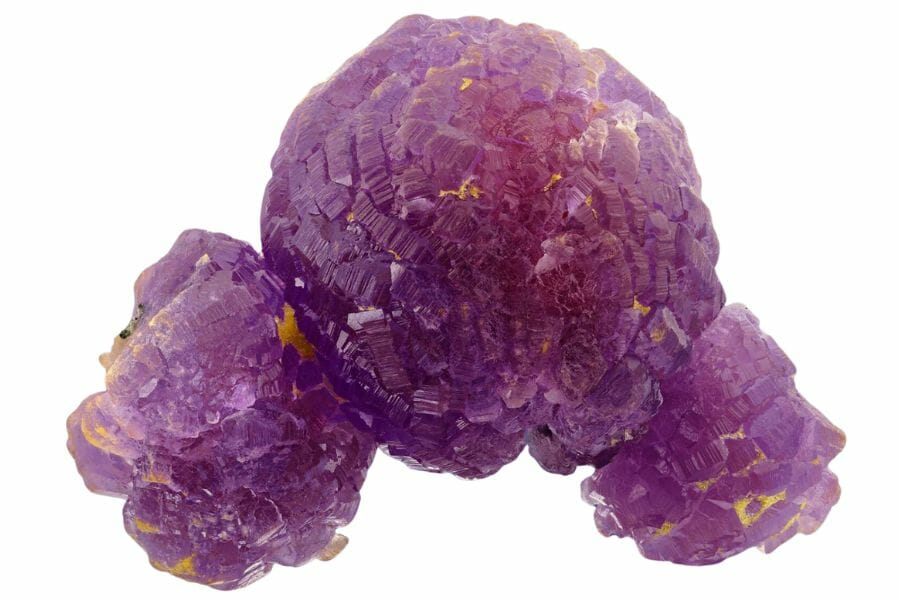You have probably seen your share of amethyst and fluorite but there are plenty more purple crystals that will amaze you. More than any other color, there is a wide variety of truly beautiful crystals that come in a wide range of purple hues that are really incredible.
Many of the crystals below are incredibly rare and very difficult to find large specimens of. This makes them treasured pieces in expensive collections which can make seeing them very tricky to do.
Fortunately, we have used our network of top-quality crystal dealers, as well as our own collection, to put together an absolutely incredible list of crystals that range from light violets to the darkest purples.
We’ll also share some really interesting info about each crystal and where you might be able to find some for yourself!
The Purple Crystals You Have To See
This is our in-depth list of the most fascinating purple crystals we’ve seen (I’ve we’ve spent a lot of time in the best places to find crystals). From light purple to dark purple you will find just about every shade here. Not to mention some beautiful reddish purples.
There are an amazing variety of crystals out there if you know where to look!
Erythrite – A Stunning Red Purple Crystal
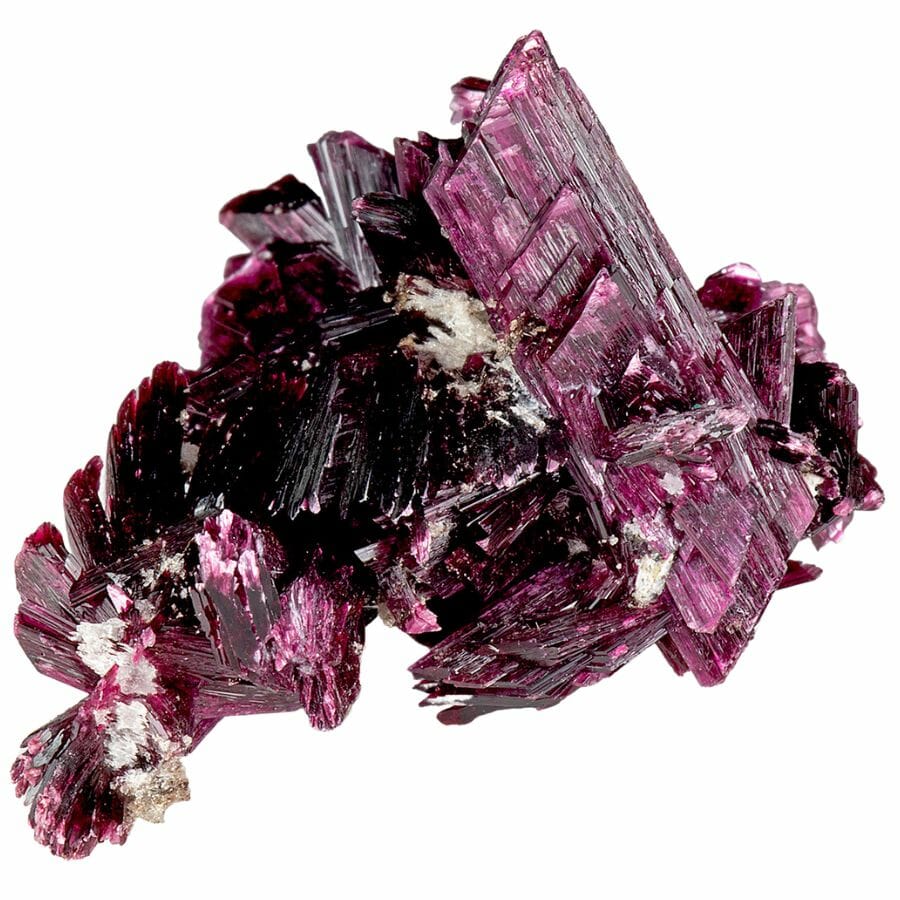
Erythrite is a stunning mineral that belongs to the arsenate mineral group. What makes erythrite particularly fascinating is its vibrant pink to purple color, which can range from pale pink to deep crimson hues. Its lustrous, transparent to translucent crystal structure only adds to its beauty.
Erythrite’s color is due to the presence of cobalt within its chemical composition. Interestingly, erythrite is one of the few minerals that contain this rare element. Another interesting feature of erythrite is that it is fluorescent under UV light, emitting a bright red glow.
It’s primarily found in hydrothermal veins that form in areas of volcanic activity or in oxidized cobalt-rich areas. It is commonly found in countries such as Morocco, Germany, Sweden, and the United States.
Because of its striking beauty and unique properties, erythrite is a popular gemstone and a sought-after collector’s item.
Chalcopyrite
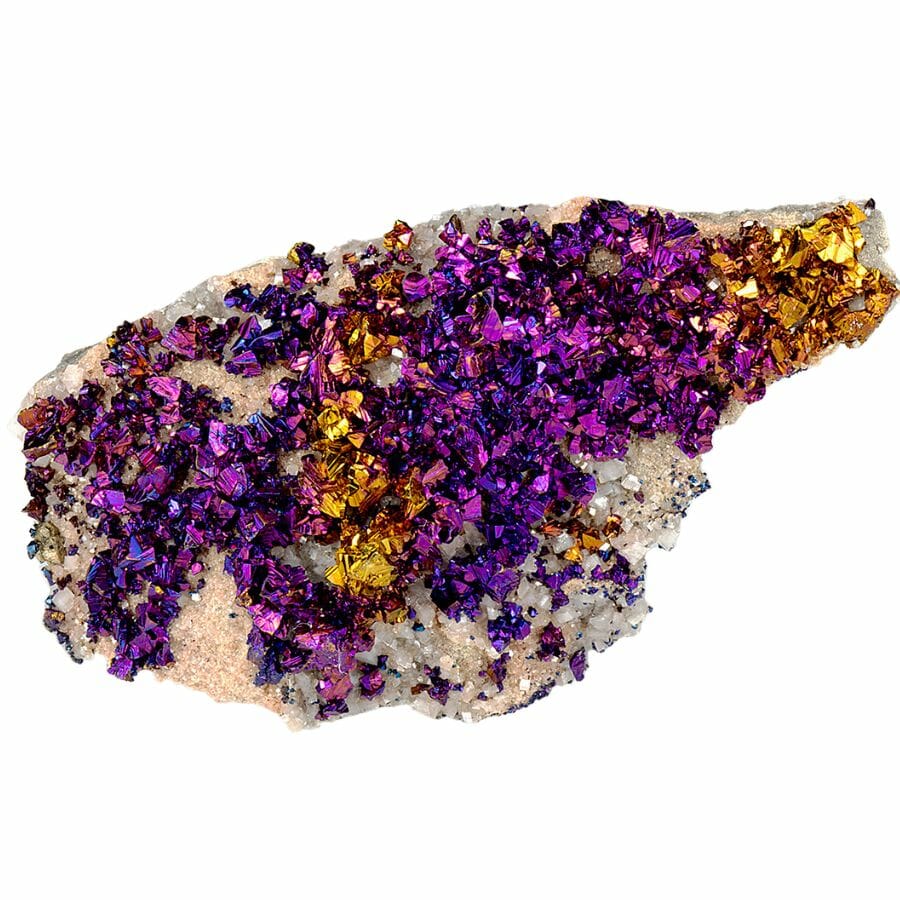
Chalcopyrite is a brass-yellow sulfide composed of copper, iron, and sulfur. It’s often mistaken for gold due to its metallic luster and striking yellow color, which has earned it the nickname “Fool’s Gold.” Its unique tetragonal crystal structure and frequent association with other metallic minerals make chalcopyrite particularly interesting to gemologists and crystal enthusiasts.
One remarkable feature of chalcopyrite is its iridescent tarnish, which can exhibit a range of colors, including purple, blue, and green, caused by the oxidation of the mineral’s surface. This “peacock ore” radiance contributes to chalcopyrite’s appeal as a decorative and collectible specimen.
It’s widely distributed globally, with significant deposits in countries like the United States, Canada, Mexico, Peru, Australia, and Kazakhstan. Chalcopyrite is often found alongside other metallic minerals, including pyrite, bornite, and galena.
Amethyst

Known for its alluring violet to purple hues, amethyst derives its color from the presence of trace amounts of iron and its subsequent exposure to natural radiation. The mineral’s vibrant color, transparent to translucent nature, and vitreous luster have made it one of the most popular and sought-after gemstones with the price of amethysts becoming quite high in many cases.
Amethyst belongs to the trigonal crystal system and typically forms prismatic or drusy crystals, often within geodes or as attractive crystal clusters. The mineral is also known for its piezoelectric properties, which cause it to generate an electric charge under mechanical stress.
Amethyst can be found in various geological environments, such as hydrothermal veins, volcanic rocks, and geodes, and is often associated with minerals like calcite, chalcedony, and agate. Amethyst is found around the world including in Brazil, Uruguay, Madagascar, Zambia, Russia, and the United States.
I’m you’re interested in finding some of your own, check out our guide to finding amethysts near you.
Opal
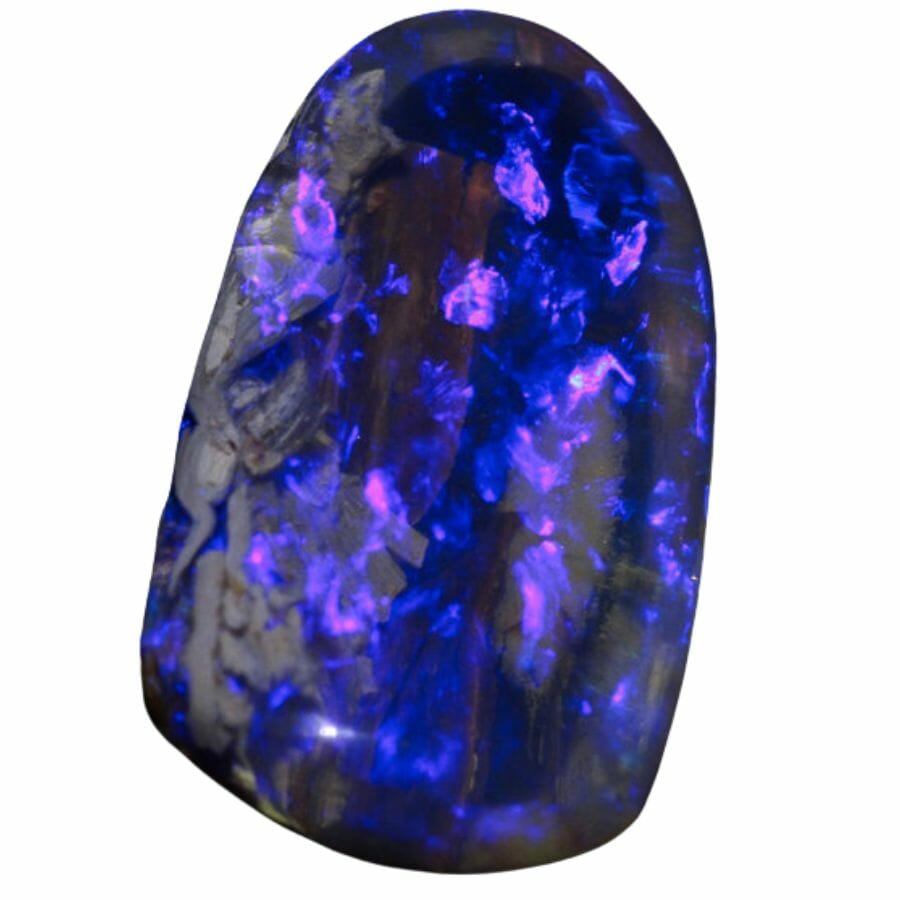
Opal is renowned for its incredible play-of-color phenomenon, which displays a vibrant array of shifting hues as the stone is moved or viewed from different angles. This stunning effect, opalescence, results from the gemstone’s microstructure, consisting of numerous silica spheres arranged in an orderly pattern.
The interaction of light with these spheres causes the spectacular spectral colors that Opal is famous for.
Opal belongs to the amorphous category of minerals, lacking a definitive crystal structure. It forms in various colors, including white, black, and shades of blue, green, red, and orange.
Opal’s unique characteristics and striking beauty have led to its prominence throughout history in various cultures and civilizations. It has been revered as a symbol of good fortune, hope, and creativity.
Though opal can be found in several locations worldwide, Australia is the most significant source, producing approximately 90% of the world’s opals.
Clear Purple Creedite
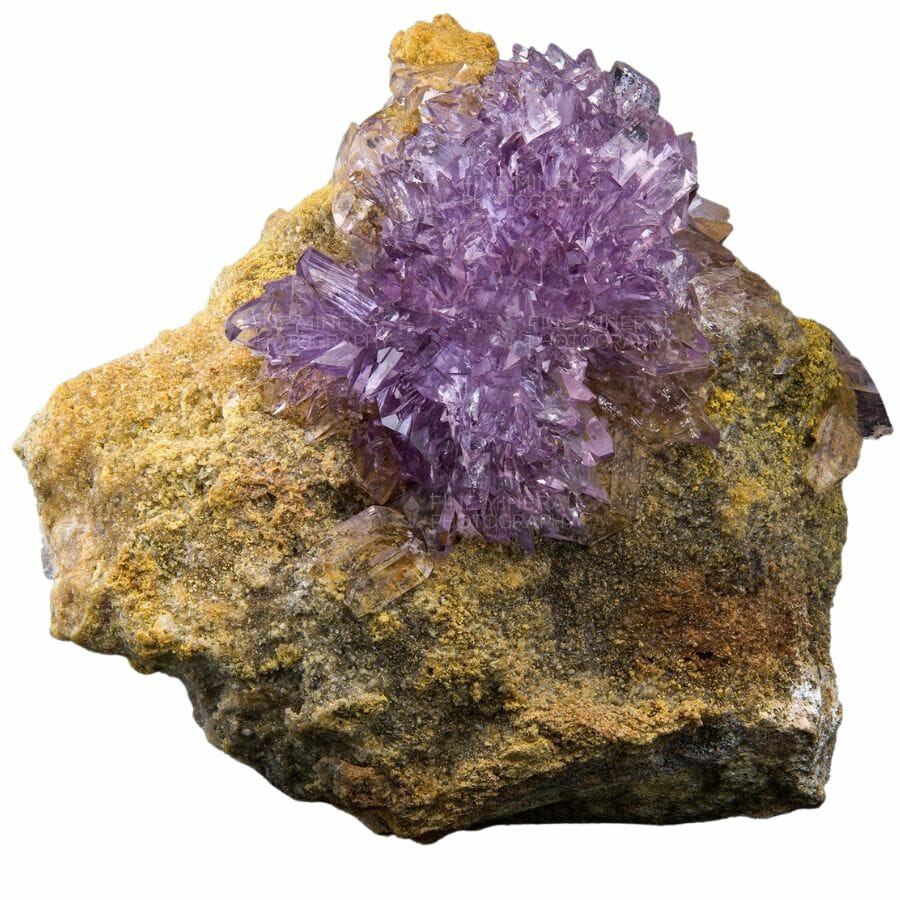
Creedite is known for its distinctive radial crystal clusters and vivid coloration. From colorless to purple, orange, and white shades, creedite’s hues can be attributed to trace elements such as vanadium and chromium.
This magnetic mineral is primarily found in hydrothermal veins and the oxidized zones of ore deposits, often associated with other colorful minerals such as fluorite and barite. Creedite’s name is derived from its type locality, the Creede Quadrangle in Colorado, United States, where it was first discovered in 1916.
The scarcity, striking crystal habit, and vibrant colors of creedite contribute to its appeal as a highly prized mineral specimen.
Light Purple Apatite
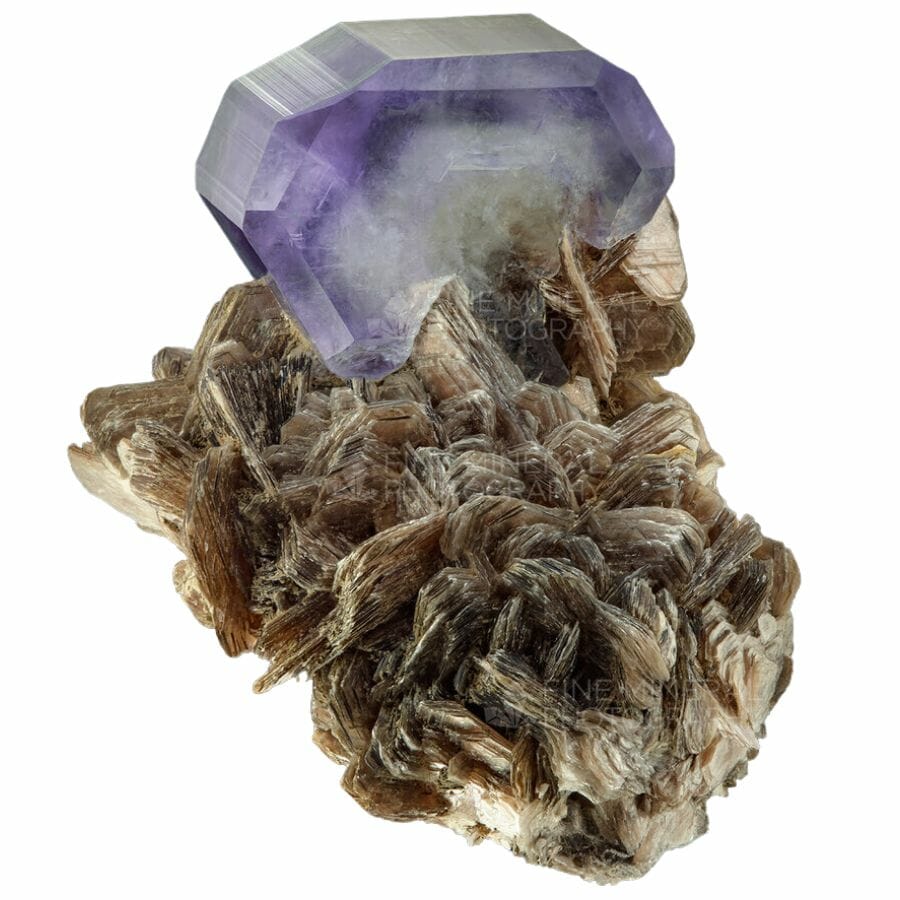
Apatite is a group of phosphate minerals that include hydroxylapatite, fluorapatite, and chlorapatite. Its name is derived from the Greek word ‘apatein,’ meaning ‘to deceive,’ due to its ability to mimic other gemstones. Apatite exhibits diverse colors, including blue, green, yellow, violet, pink, and colorless.
While apatite is found in various geological environments, including igneous, sedimentary, and metamorphic rocks, it’s most commonly associated with phosphate-rich deposits.
Notable occurrences of apatite can be found worldwide, with significant deposits in Brazil, Mexico, Myanmar, Russia, Madagascar, and the United States. Some of the finest gem-quality apatite, known as ‘neon apatite,’ is sourced from Madagascar and exhibits an intense blue or green color with exceptional clarity.
In addition to its aesthetic appeal, apatite has significant industrial applications, primarily as a source of phosphorus for fertilizer production. The mineral is also a substantial component of tooth enamel and bone mineral, making it an essential element in geological and biological realms.
Coquimbite
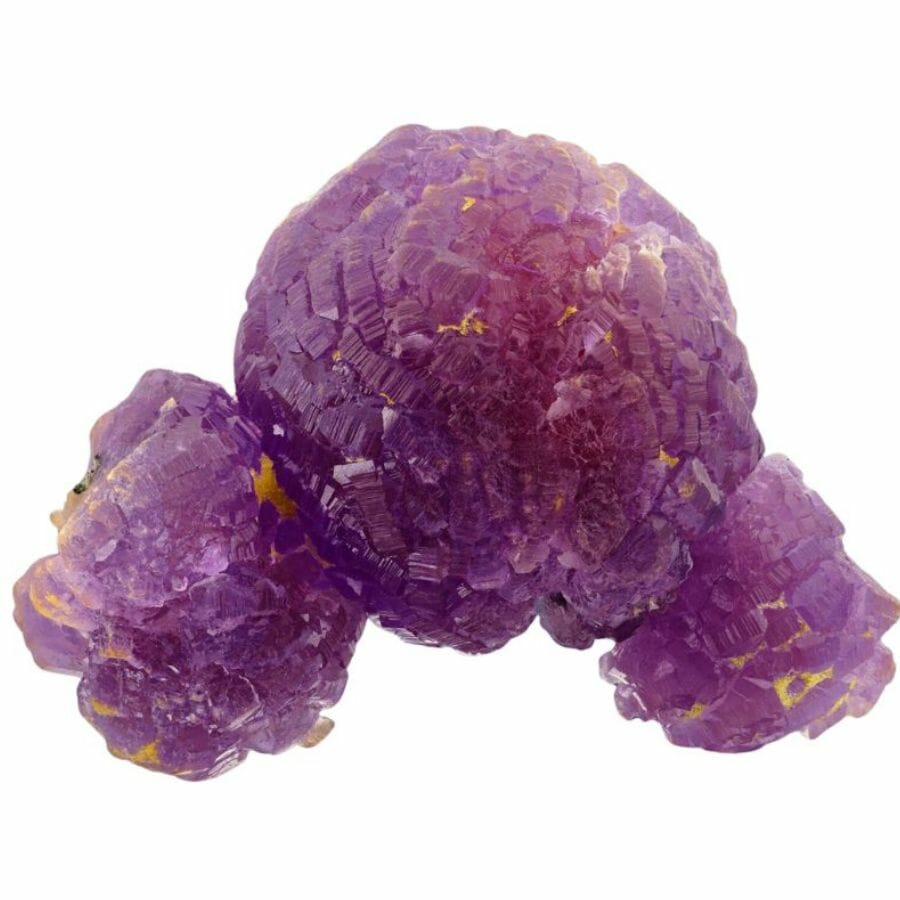
Coquimbite, an intriguing and relatively rare mineral, is an iron sulfate hydrate known for its vibrant hues and fascinating crystal habit. It exhibits a range of colors, including pale to deep violet, reddish-brown, and yellow, which can be attributed to the presence of iron in its chemical composition.
Coquimbite is a member of the triclinic crystal system and typically forms prismatic, acicular, or fibrous crystals. Its crystals often display a vitreous to pearly luster, adding to the mineral’s visual appeal.
This mineral is primarily found in arid regions, as it forms in the oxidized zones of sulfide deposits or as an efflorescent crust in mining tunnels. Coquimbite’s name is derived from its type locality, the La Coquimbana Mine in the Atacama Desert, Chile, where it was first described in 1841.
In addition to its type locality in Chile, significant deposits have been discovered in the United States, Spain, Italy, and Peru. The rarity, vivid coloration, and unique crystal habit of coquimbite contribute to its status as a highly prized and collectible mineral specimen.
Kammererite
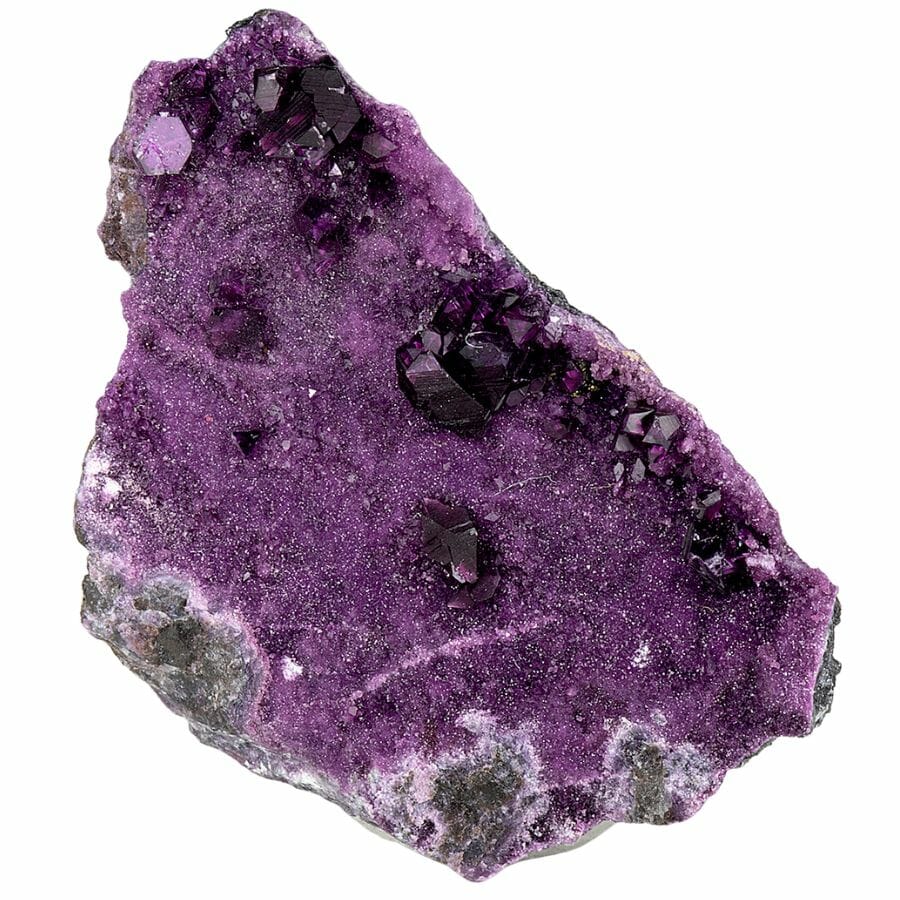
Kammererite belongs to the clinochlore subgroup of the chlorite group. It’s distinguished by its striking deep magenta to reddish-purple color due to the presence of chromium in its chemical composition.
It exhibits a unique monoclinic crystal structure and can be found in platy or scaly aggregates and tiny, well-formed crystals. Kammererite possesses a pearly to vitreous luster, enhancing its visual appeal. T
he scarcity and vivid coloration of kammererite contribute to its status as a highly prized and collectible mineral specimen.
The rarity of kammererite is another aspect that makes it so unique. It forms under specific geological conditions, primarily in areas with chromium-rich metamorphic rocks, such as serpentinites and chromite-bearing schists.
Consequently, kammererite is only found in a limited number of locations worldwide. Notable occurrences of kammererite have been reported in Turkey, Russia, and Norway.
The Dark Purple Crystal Diaspore
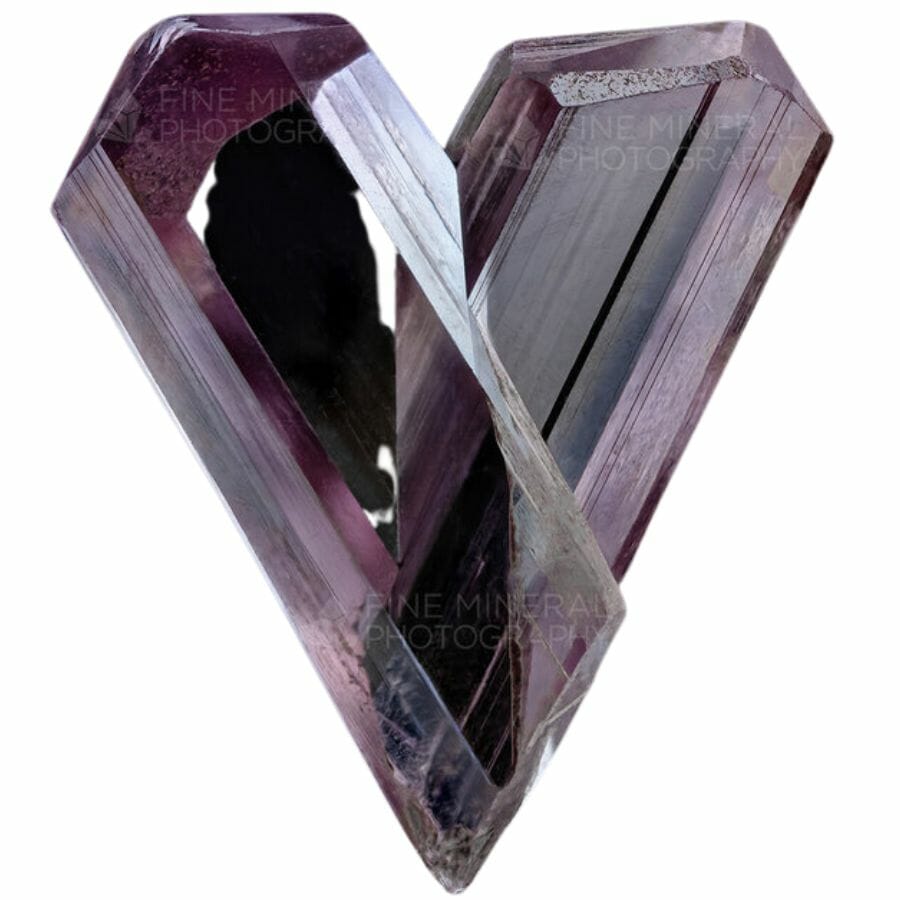
Diaspore, an alluring and distinctive mineral, is an aluminum oxide hydroxide known for its color-changing properties and relative rarity in gem-quality form. It’s easily one of our favorite purple gems but it’s really tough to find!
The phenomenon of color change, which occurs in some diaspore specimens, results in a shift of hues under different light sources. For instance, a diaspore gemstone may appear greenish under daylight and display a pinkish or champagne hue under incandescent lighting.
Diaspore belongs to the orthorhombic crystal system, typically forming tabular, elongated, or prismatic crystals. It’s often found in metamorphic environments, particularly in bauxite deposits and schistose rocks, created by altering aluminum-rich minerals.
Significant deposits of diaspore can be found in various locations worldwide, with Turkey being the most essential source of gem-quality material. Other occurrences of diaspore have been documented in Brazil, Russia, China, and the United States.
Fluorite
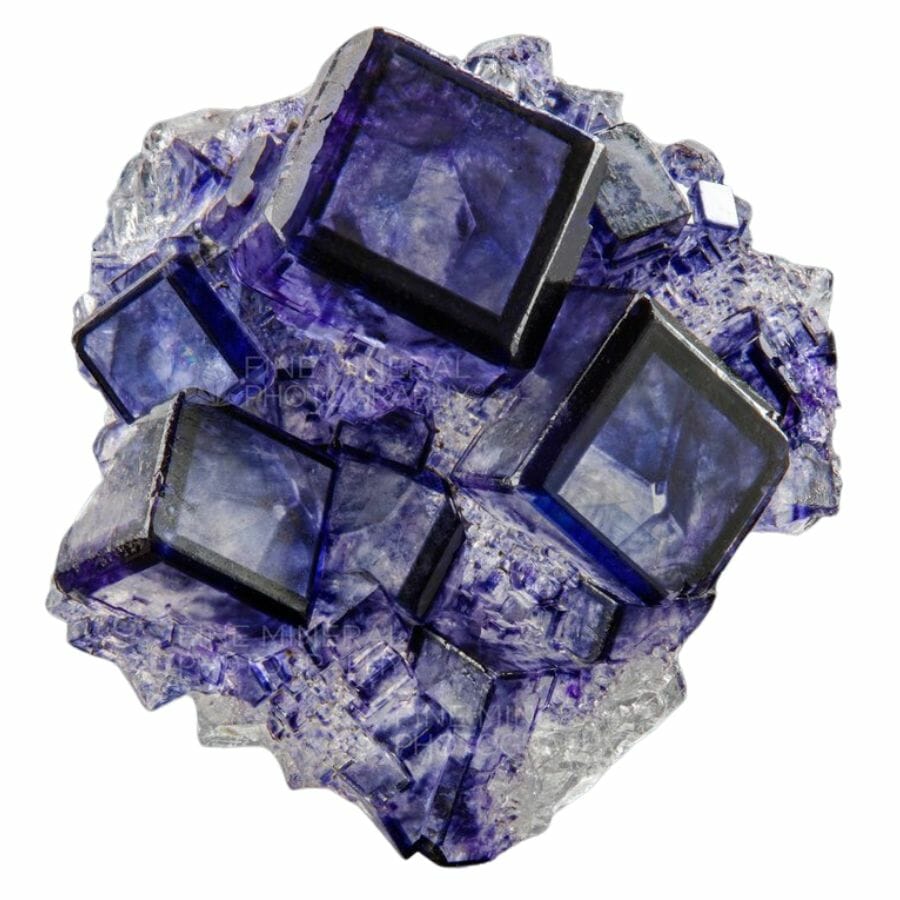
Fluorite is known for its diverse colors, stunning crystal formations, and unique properties. Also known as fluorspar, fluorite is a calcium fluoride mineral with various hues, including purple, green, blue, yellow, pink, and colorless.
Fluorite belongs to the isometric crystal system and commonly forms cubic, octahedral, or dodecahedral crystals, often with a vitreous luster. In addition to its aesthetic appeal, fluorite is also prized for its fluorescence, which causes the mineral to emit light under ultraviolet radiation, and its thermoluminescence, which causes it to emit light when heated.
The mineral is found in various geological environments, including hydrothermal veins, carbonate rocks, and granite pegmatites. Fluorite is often associated with calcite, quartz, and barite minerals.
Significant fluorite deposits can be found worldwide including China, Mexico, South Africa, the United Kingdom, and the United States.
Violet Azurite
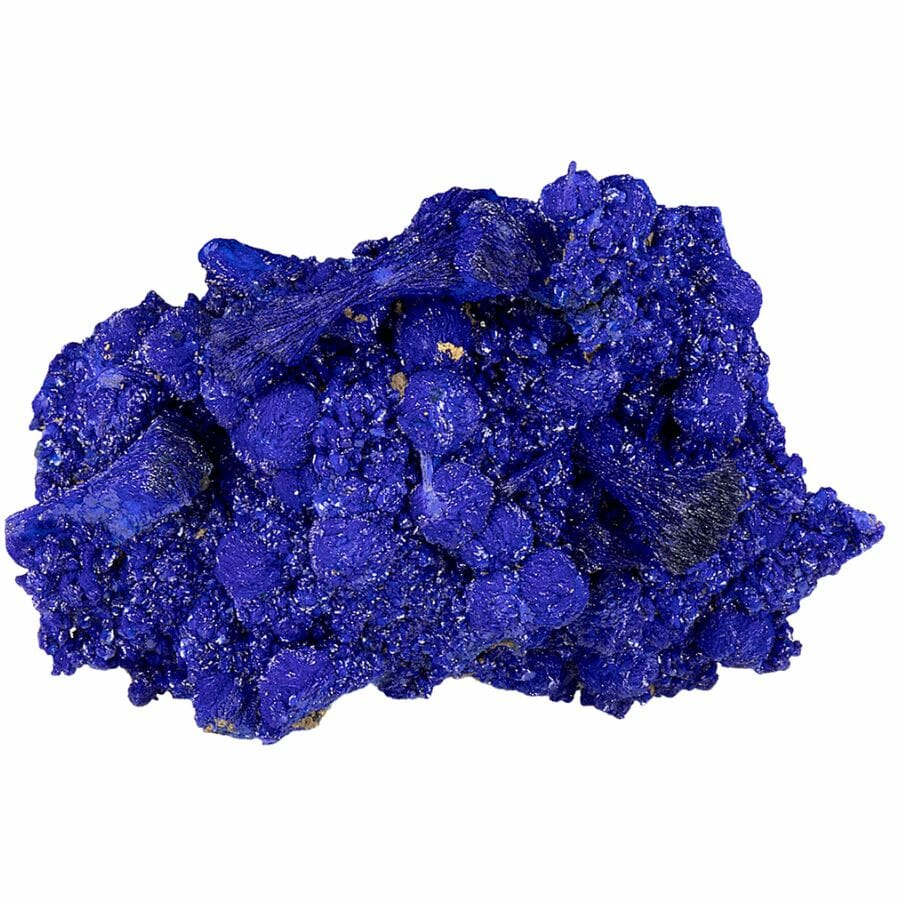
Azurite, a striking deep blue mineral, has captivated the hearts of gemologists and crystal enthusiasts for centuries. As a copper carbonate hydroxide mineral, it boasts a vibrant azure hue, used for decorative and artistic purposes since antiquity. Its unique monoclinic crystal structure and rich color set it apart from other minerals.
Azurite’s unparalleled beauty is further enhanced by its characteristic vitreous luster and intricate crystalline formations, often as stalactitic, fibrous, or botryoidal structures. Its stunning color results from the presence of copper in its chemical composition. Its deep blue hues can sometimes be accompanied by the company of malachite, a vibrant green copper mineral, creating an incredible visual contrast.
In addition to its unique properties, azurite crystals are used for ornamentation and collection, as a pigment in paints, and as an ore for extracting copper. It can be found worldwide, with significant deposits in Morocco, Russia, France, Australia, and the United States.
Kunzite
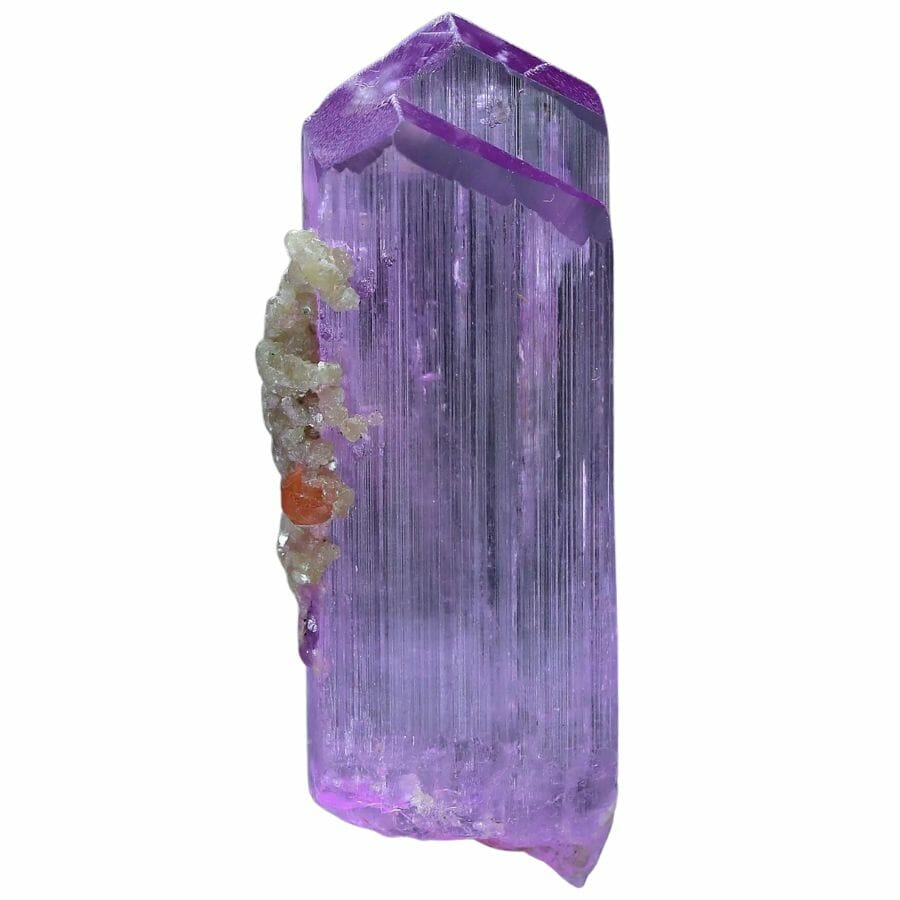
Kunzite is a variety of the mineral spodumene and is renowned for its delicate pastel hues, ranging from pale pink to violet, attributed to manganese ions in its chemical composition.
Named in honor of the famed gemologist George Frederick Kunz, who first described it in the early 20th century, kunzite has garnered admiration for its stunning color and unique pleochroism.
Pleochroism, a property exhibited by kunzite, refers to displaying different colors from different angles. This characteristic, with its vitreous luster and perfect prismatic cleavage, makes kunzite a highly desirable gemstone among collectors and jewelry enthusiasts.
Kunzite belongs to the monoclinic crystal system and commonly forms elongated prismatic, often vertically striated crystals. It is primarily found in lithium-rich pegmatites alongside other lithium-bearing minerals, such as lepidolite, amblygonite, and elbaite.
Although kunzite is found in various locations worldwide, the most significant deposits are in Afghanistan, Brazil, Madagascar, and the United States.
Spodumene
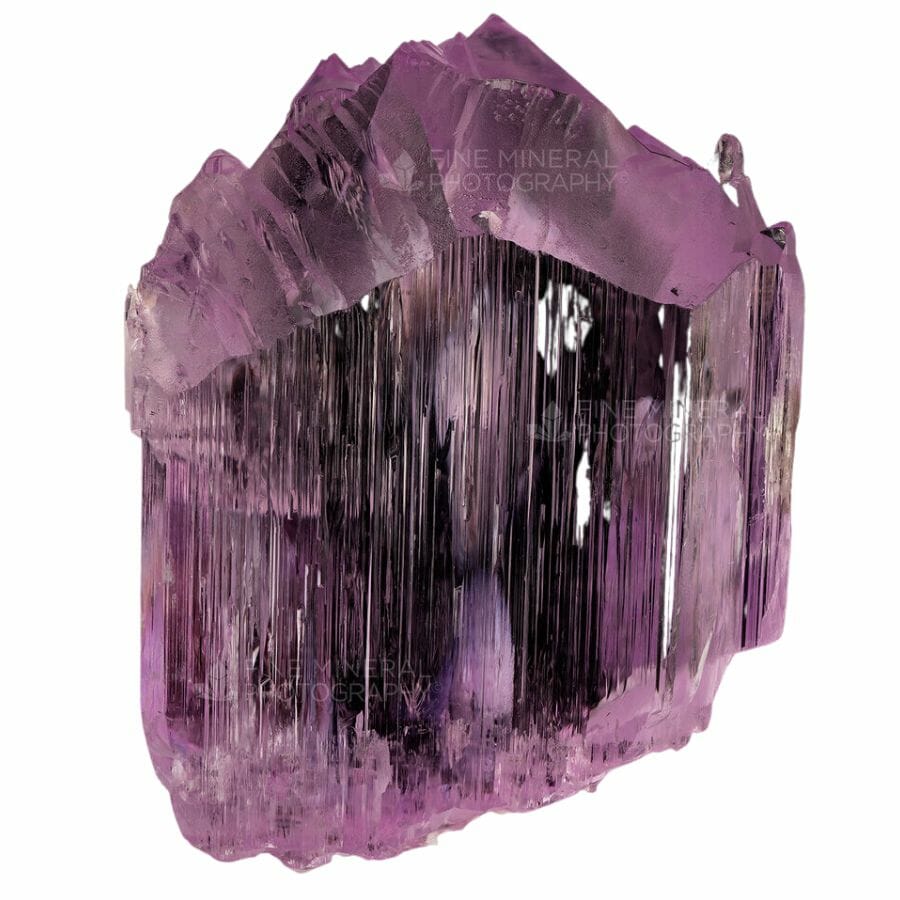
Spodumene is a pyroxene that occurs in lithium-rich pegmatites. It’s particularly noteworthy for its diverse range of colors and gem-quality varieties. Spodumene exhibits colorless, yellow, pink, violet, green, and even blue, with color zoning often observed within individual crystals.
Two gem-quality varieties of spodumene are especially prized: kunzite, known for its delicate pink to violet hues, and hiddenite, which exhibits a vibrant green color.
The presence of manganese and chromium impurities is responsible for the colors of kunzite and hiddenite, respectively. Spodumene’s pleochroism, displaying different colors when viewed from different angles, further adds to its appeal.
Significant spodumene deposits exist worldwide, including in Afghanistan, Brazil, Madagascar, Australia, and the United States. Spodumene is often associated with other lithium-bearing minerals, such as lepidolite and amblygonite.
Fluorapatite
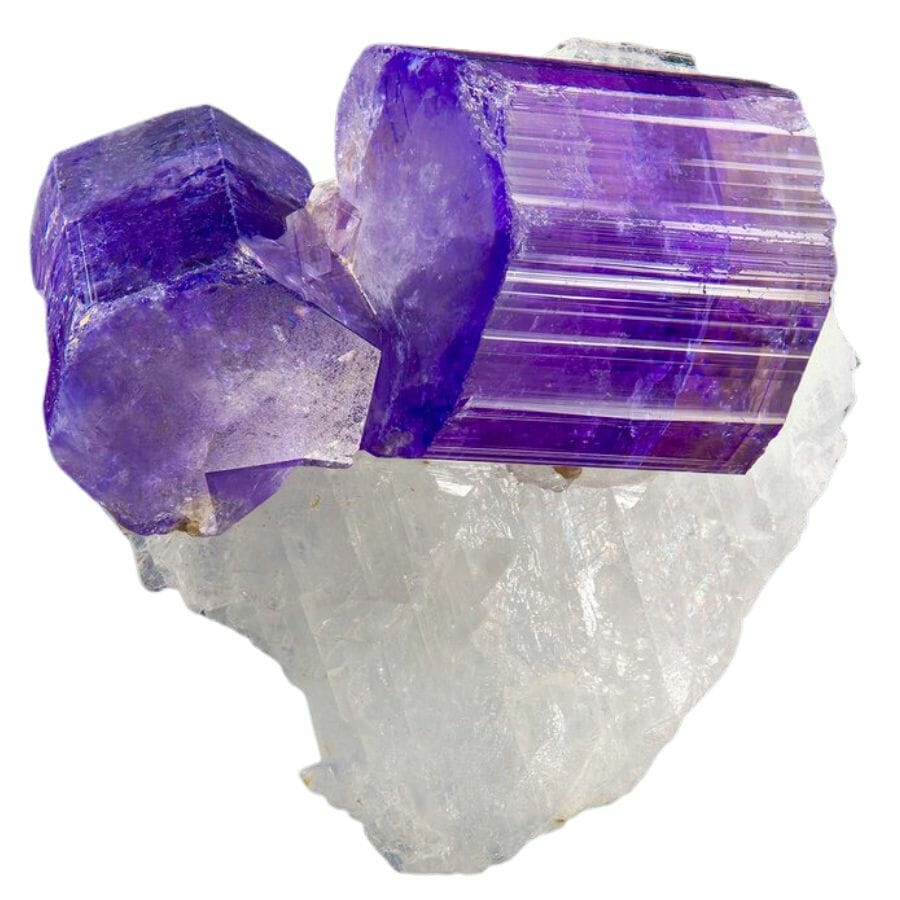
Fluorapatite is a member of the apatite group, including hydroxylapatite and chlorapatite. Characterized by its phosphate and fluoride content, fluorapatite is vital in various industries and biological systems.
It’s known for its attractive colors, which range from colorless to blue, green, purple, pink, and yellow. It belongs to the hexagonal crystal system, typically forming prismatic, tabular, or acicular crystals with a vitreous luster.
In addition to its visual appeal, fluorapatite is an essential component of tooth enamel and bone mineral, contributing to the strength and hardness of these biological structures. Industrially, the mineral is a significant source of phosphorus for fertilizer production.
Fluorapatite is found in various geological environments, including igneous, sedimentary, and metamorphic rocks, and in phosphate-rich deposits. Fluorapatite can be found worldwide, with significant deposits in Brazil, Canada, Mexico, Russia, Madagascar, and the United States.
Stichtite
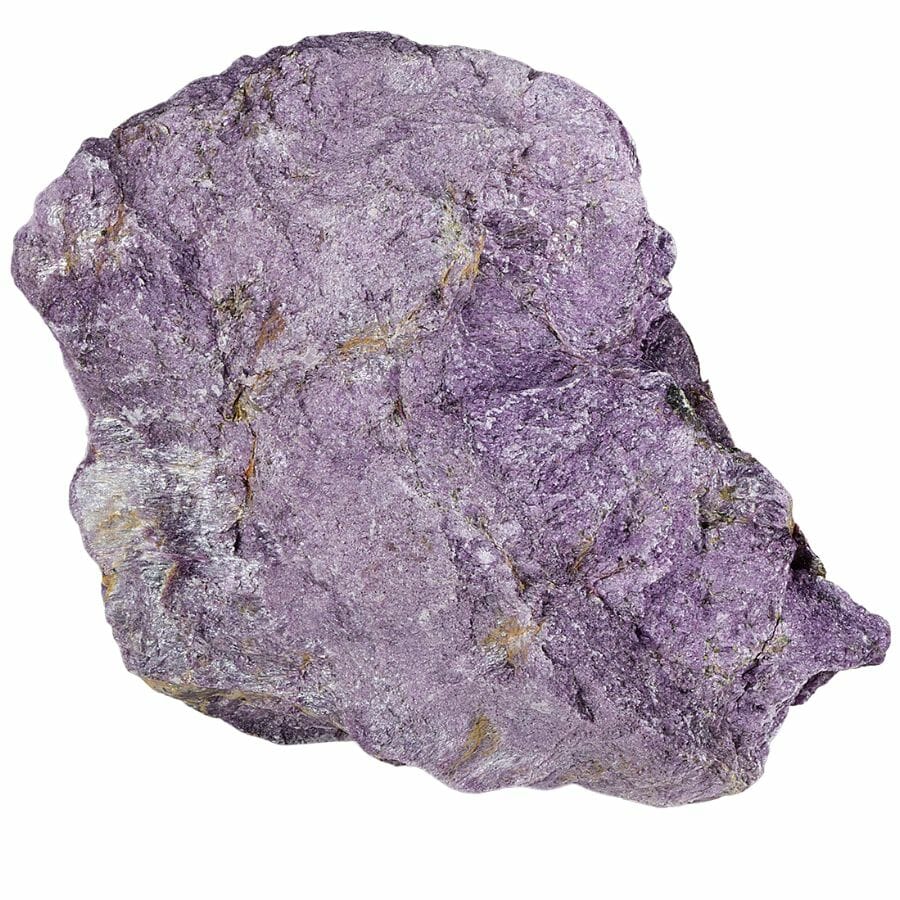
Stichtite is a truly remarkable mineral that has captured the attention of gemologists and crystal enthusiasts around the world. It is a phyllosilicate mineral, which means it has a unique layered crystal structure, giving it a distinctive undulating appearance.
Stichtite is also known for its vibrant range of colors, including shades of pink, purple, green, and blue, and is often used in jewelry making due to its exquisite beauty.
What makes stichtite truly special is its rarity. It was first discovered in Tasmania, Australia, in 1910, and is found in only a handful of locations worldwide. In addition to Tasmania, stichtite has also been found in South Africa, Canada, and Russia, but it remains a relatively uncommon mineral.
Stichtite is believed to have a range of metaphysical properties, making it a popular choice among those who practice crystal healing. It is said to promote forgiveness, compassion, and emotional healing, as well as enhance one’s spiritual awareness and intuition.
Overall, stichtite is a truly unique and special mineral that is highly valued by gemologists and collectors alike. Its rarity, distinctive crystal structure, and healing properties make it a gemstone that is truly one-of-a-kind.
Zoisite
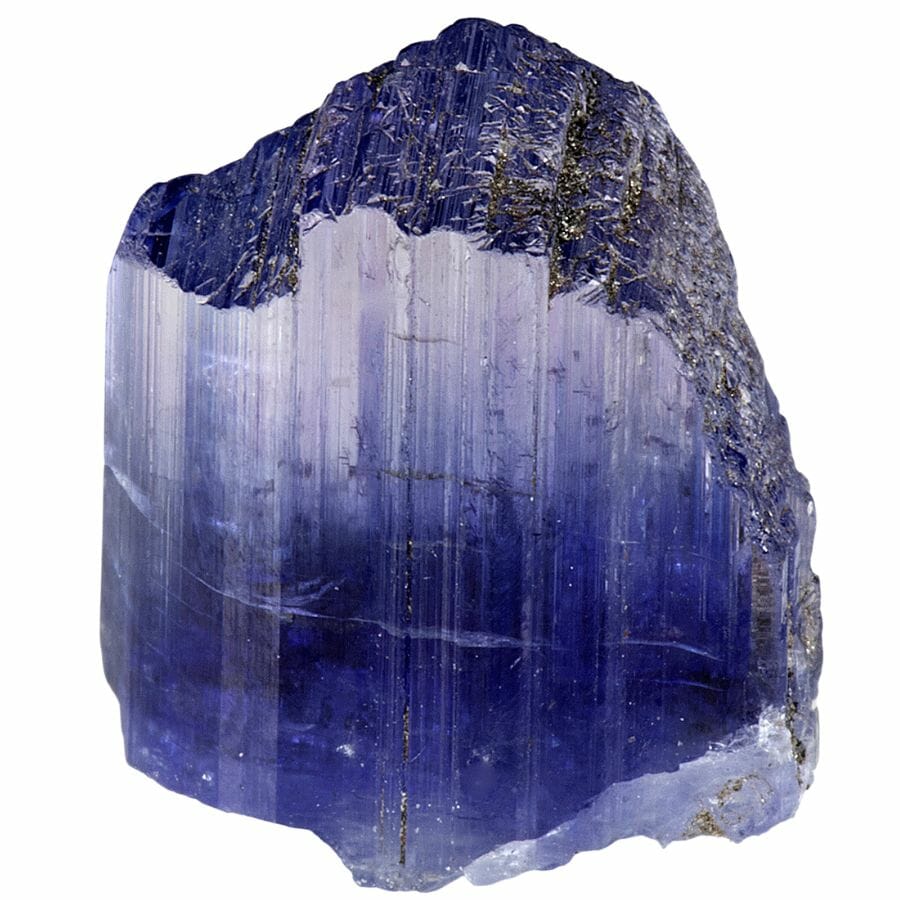
Zoisite is a calcium aluminum hydroxy sorosilicate mineral that is typically found in metamorphic rocks. It was first discovered in Austria in the early 19th century, but is now found in various locations worldwide, including Tanzania, Madagascar, and India.
It can appear in shades of green, pink, blue, yellow, and even purple, often with contrasting streaks or blotches. This distinctive pattern is caused by the presence of other minerals such as quartz, garnet, or ruby, which can form inclusions within the zoisite crystal.
Zoisite is also appreciated for its metaphysical properties. It is believed to promote vitality, creativity, and emotional healing, and is often used in crystal healing practices. Some people also believe that zoisite can help enhance spiritual awareness and connect one with their higher self.
Sugilite
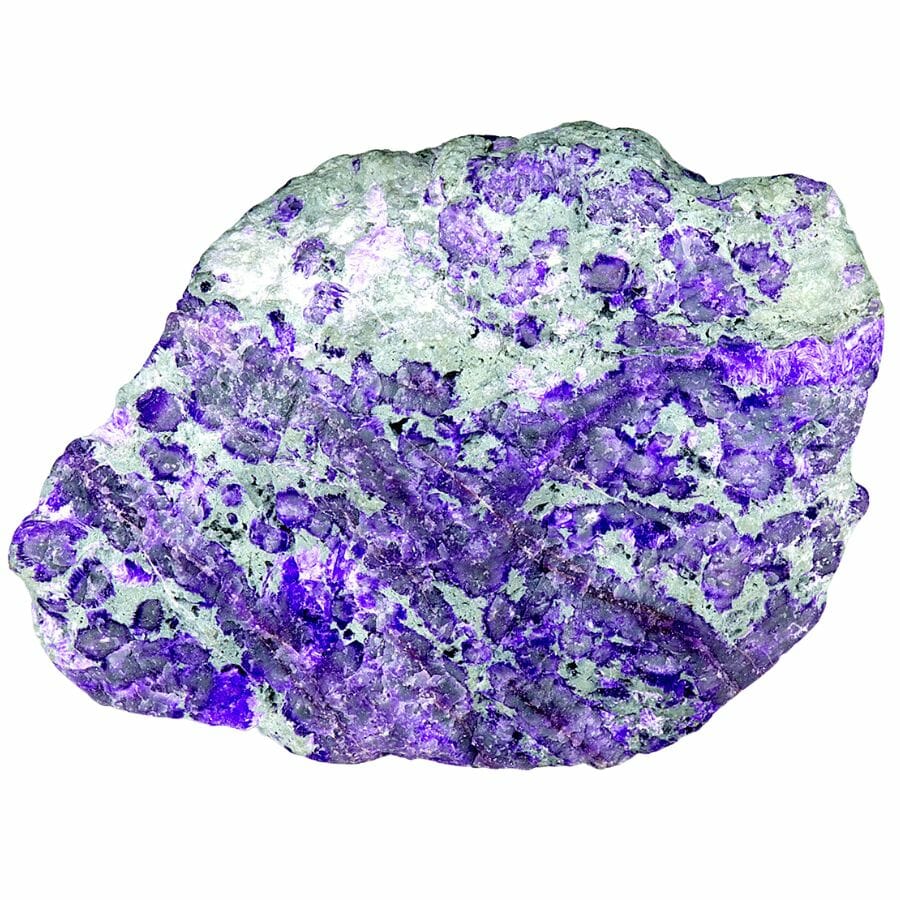
Sugilite is a stunning gemstone that is revered for its beautiful purple color. This mineral was first discovered in Japan in 1944 and is named after the Japanese petrologist, Ken-ichi Sugi. Sugilite is only found in a few locations around the world, including South Africa, Canada, and India.
It is a potassium, sodium, lithium, iron, manganese, aluminum silicate mineral that contains trace amounts of other elements such as calcium and chromium. The combination of these elements gives sugilite its distinctive purple color, which can range from deep violet to light lavender hues.
In addition to its captivating beauty, sugilite is also known for its healing properties. It is believed to promote emotional balance, strengthen the immune system, and enhance spiritual growth. For this reason, sugilite is often used in meditation and crystal healing practices.
Herderite
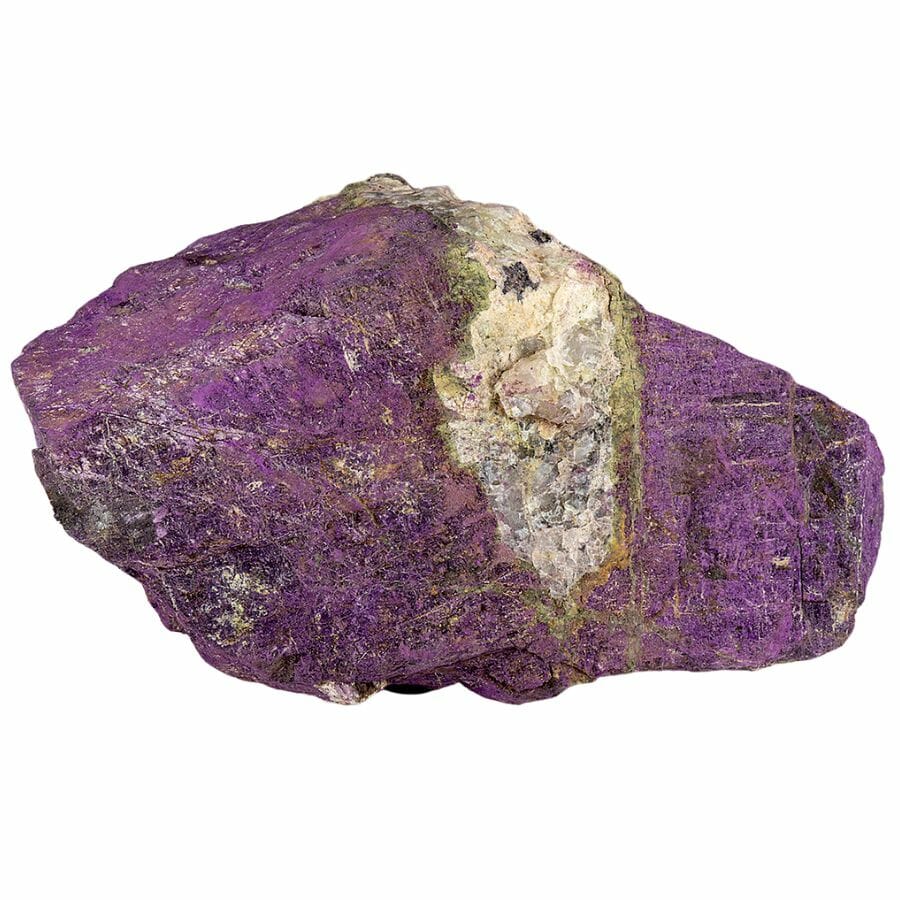
Herderite is known for its unique and distinctive features. It is a calcium, beryllium, phosphate mineral that is found in a few locations around the world, including Brazil, Afghanistan, and the United States.
What makes herderite particularly interesting is its color and clarity. It can be found in a range of colors, including green, yellow, pink, and colorless. Its crystal structure is also unique and often displays a rare twinning pattern known as the Herder twin, which collectors highly prize.
In addition to its beauty, herderite is also known for its metaphysical properties. It promotes personal growth, increases intuition, and enhances spiritual awareness. As a result, it is often used in meditation and crystal healing practices.
Hackmanite
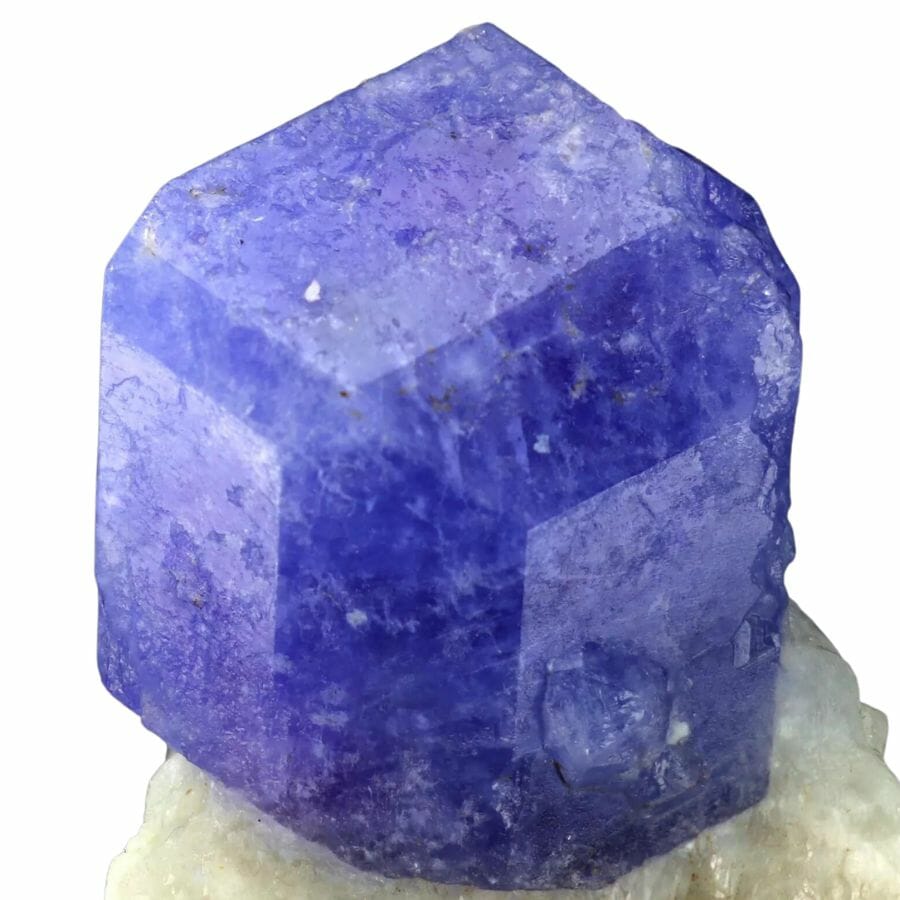
Hackmanite is a rare sodalite and exhibits a unique property known as tenebrescence. Tenebrescence, or reversible photochromism, causes hackmanite to change color when exposed to ultraviolet (UV) light, such as sunlight or UV lamps.
Typically, hackmanite appears in pale shades of pink, violet, or grayish-white, but when exposed to UV light, it can deepen to rich shades of purple, magenta, or even orange. Intriguingly, this color change is temporary; hackmanite gradually reverts to its original hue when removed from the UV light source.
The rarity of hackmanite adds to its allure. It can be found in a few locations worldwide, notably in Myanmar, Afghanistan, Canada, and Greenland. It’s often associated with other sodalite group minerals and alkaline igneous rocks such as nepheline syenites and related pegmatites in these locations.
Lazurite
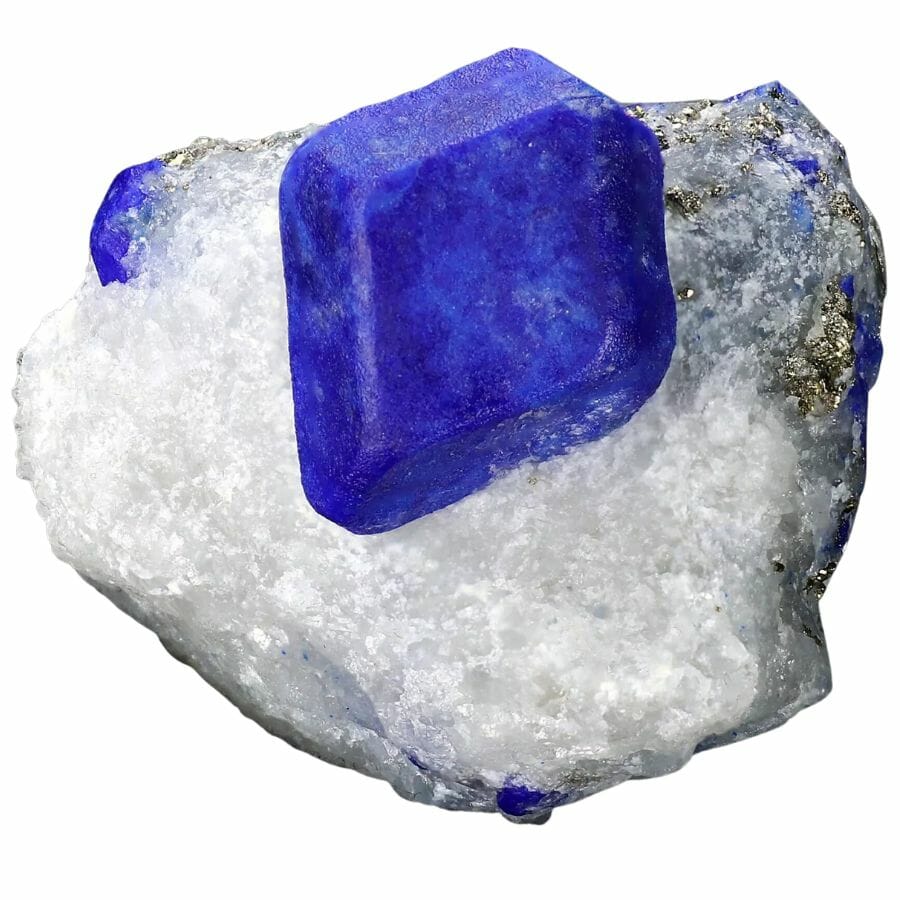
Lazurite is a vital component of the semi-precious gemstone lapis lazuli, treasured for millennia for its vibrant hue and ornamental value. It’s a member of the feldspathoid group and is chemically related to sodalite, hauyne, and nosean.
Lazurite occurs in isometric crystal systems, typically forming dodecahedral or cubic crystals. However, it’s commonly found as granular masses within lapis lazuli, including calcite, pyrite, and other minerals.
The contrast between lazurite’s deep blue color and the golden speckles of pyrite is particularly striking, contributing to the visual appeal of lapis lazuli.
Lazurite’s unique color has made it a valuable pigment throughout history, known as ultramarine. This pigment has been used in various artistic and decorative applications, including painting, sculpture, and jewelry-making.
Lazurite is primarily found in metamorphic rocks, particularly in contact zones between limestone and intruding igneous rocks. Significant deposits of lazurite are located in the Sar-e-Sang mines in the Badakhshan province of Afghanistan, which have been a source of high-quality lapis lazuli for over 6,000 years.
Other notable occurrences of lazurite have been documented in Russia, Chile, Italy, and the United States.

